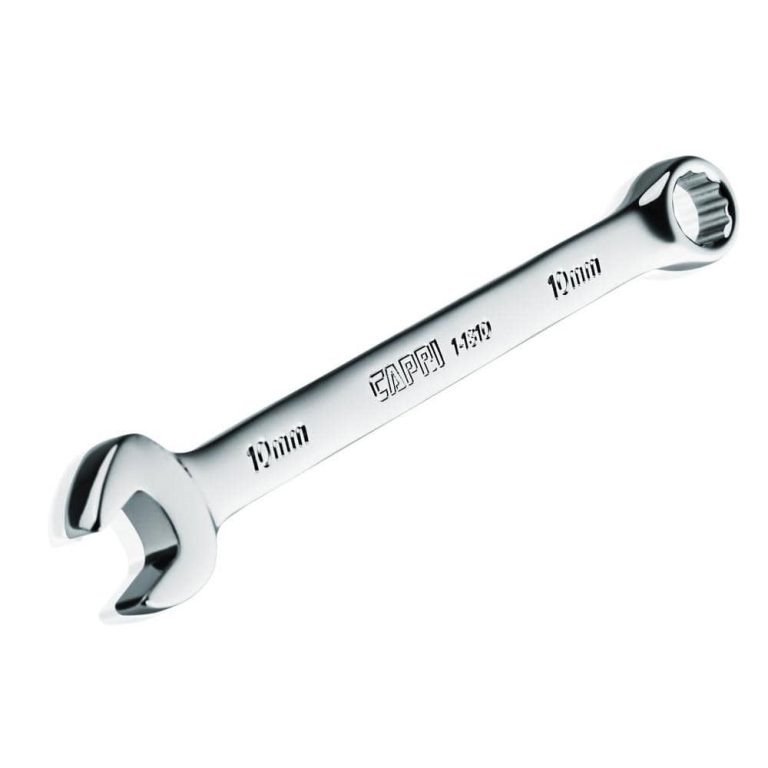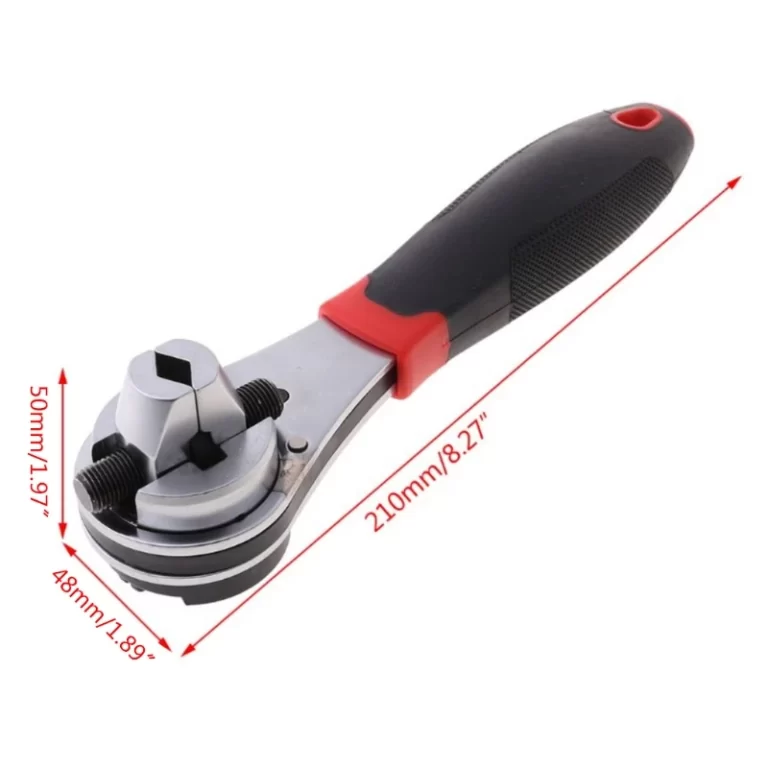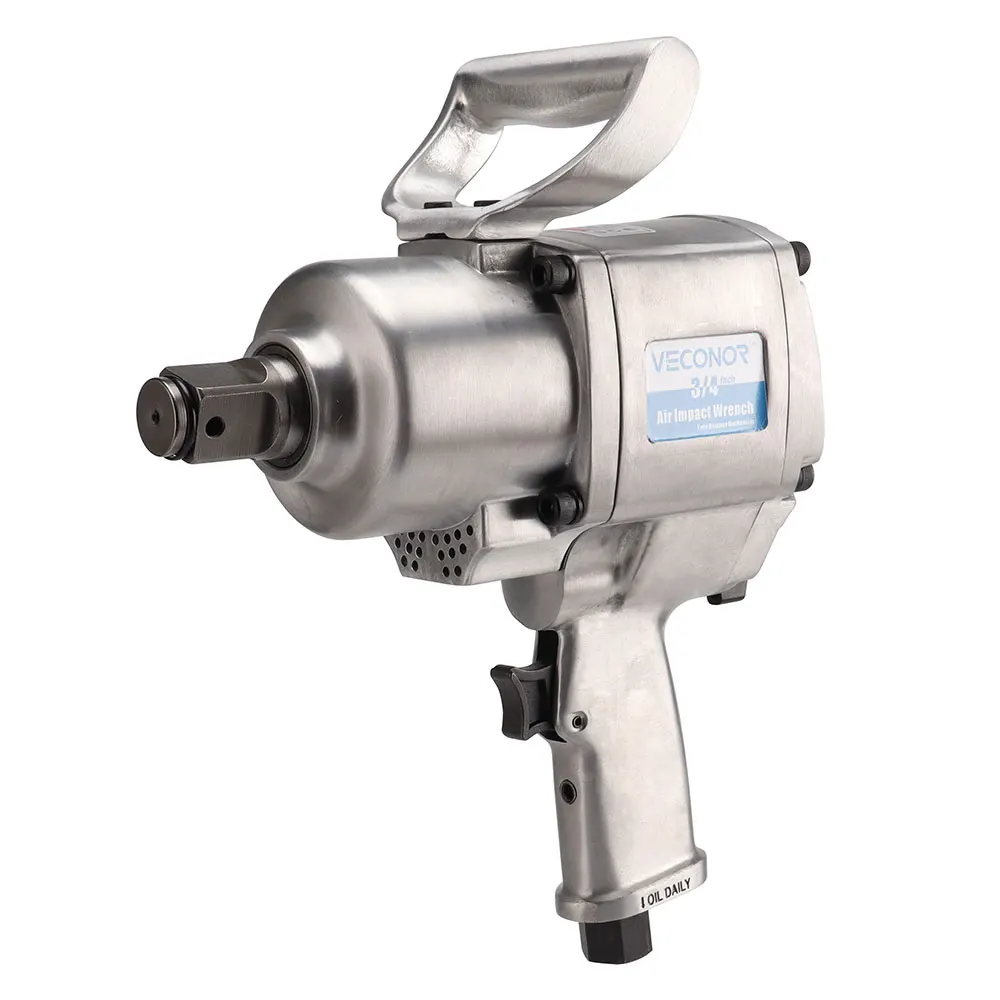
The Guide to High-Performance Pneumatic Impact Wrench
What is a Pneumatic Wrench?
A pneumatic impact wrench is a powerful tool driven by compressed air. It is primarily used to tighten or loosen bolts, nuts, and other fasteners efficiently. By delivering high torque with minimal effort, it simplifies various mechanical tasks.
Definition and Basic Functionality
A pneumatic impact wrench converts compressed air into mechanical energy. The air powers the motor inside the tool, causing the hammer mechanism to rotate. This mechanism provides rotational force, known as torque, to the anvil. The anvil then transfers this force to the fastener, enabling quick and precise tightening or loosening.
These tools feature adjustable torque settings, allowing users to perform tasks with control and accuracy. They are often lightweight, making them easy to handle for extended work hours.
Common Types and Variations
Pneumatic impact wrenches come in multiple types and sizes, designed for different applications:
- Standard Impact Wrenches: These are versatile tools used for everyday tasks like automotive repair.
- Compact Models: Smaller versions suited for tight spaces and lighter workloads.
- Heavy-Duty Wrenches: Larger tools designed for industrial applications with significantly higher torque levels.
- Angle Impact Wrenches: Tools with angled heads for bolts in difficult-to-reach areas.
Each variation fulfills specific needs. Selecting the right type depends on the required torque, space constraints, and application area. Pneumatic impact wrenches are reliable and versatile, making them essential for both professional and personal toolkits.
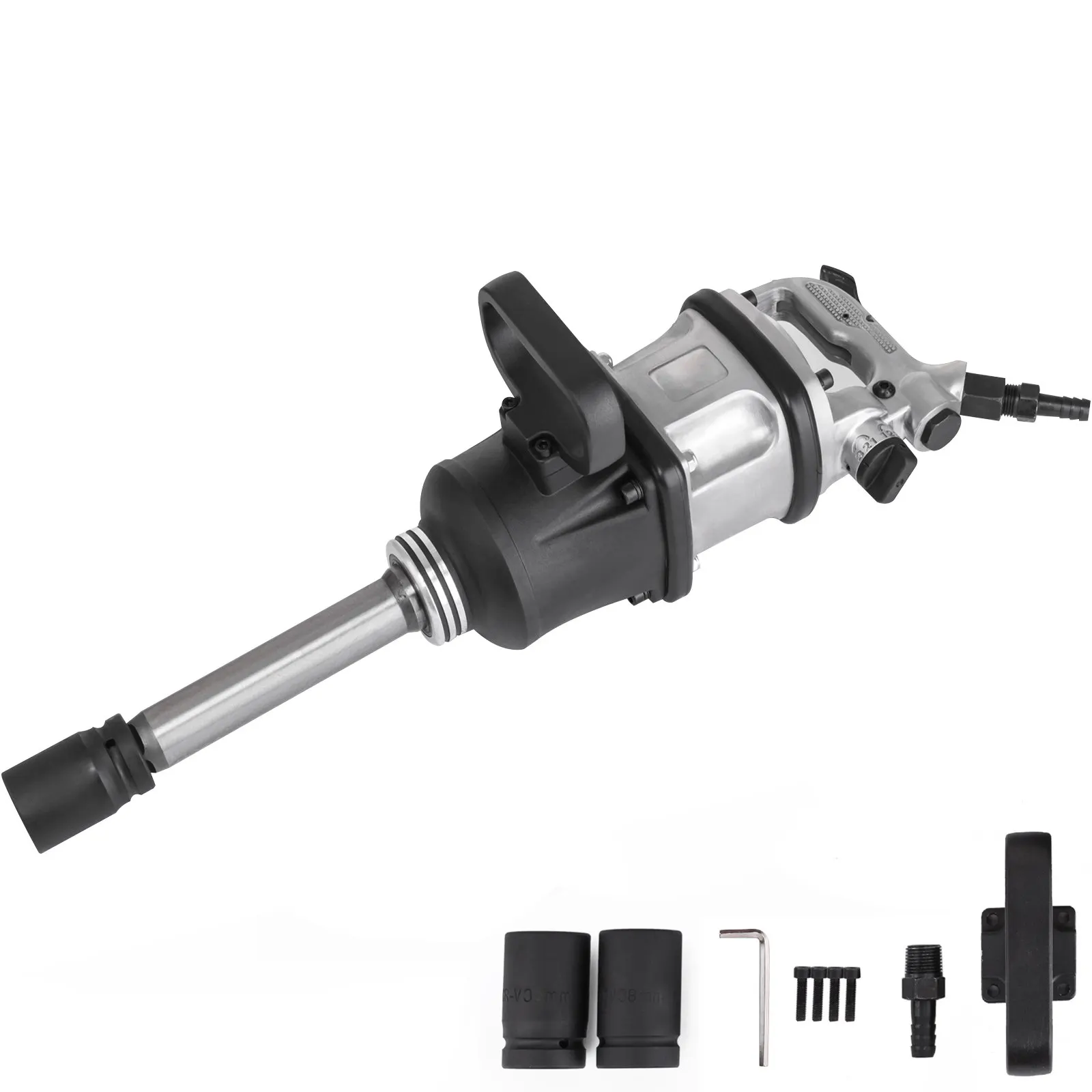 Key Components of a Pneumatic Wrench
Key Components of a Pneumatic Wrench
Understanding the key components of a pneumatic impact wrench is essential for proper usage and maintenance. These parts work together to deliver powerful torque, enhancing efficiency during mechanical tasks. Let’s explore the important components that make this tool function optimally.
Motor, Hammer Mechanism, and Anvil
- Motor: The motor is powered by compressed air. It drives the hammer mechanism to generate force.
- Hammer Mechanism: This component delivers bursts of rotational energy. It strikes the anvil repeatedly to create torque.
- Anvil: The anvil connects the hammer mechanism to the fastener. It transfers torque to tighten or loosen bolts and nuts.
These three elements work in unison to ensure high performance. Proper maintenance of these components can extend the tool’s lifespan and reliability.
Air Compressor Connection and Mechanics
- Air Compressor Connection: Pneumatic impact wrenches are connected to an air compressor. The connection allows compressed air to flow into the tool.
- Air Regulation Mechanism: The wrench has valves or controls to regulate airflow. This ensures consistent power during operation.
- Air Efficiency: The tool’s design optimizes air usage, minimizing waste. This efficiency enhances the overall performance.
These features highlight the dependence of pneumatic impact wrenches on compressed air. A high-quality air compressor and proper settings are crucial for achieving optimal results.
How Pneumatic Wrenches Operate
Understanding how pneumatic impact wrenches operate is key to using them effectively. These tools rely on compressed air and an ingenious mechanism to deliver their powerful performance. Below, we explore the two fundamental aspects of their operation.
Compressed Air as a Power Source
Compressed air drives the pneumatic impact wrench. An air compressor creates pressurized air essential for energy.
- Airflow Activation: Pressing the trigger allows compressed air to enter the wrench’s motor.
- Consistent Energy Supply: The air compressor ensures uninterrupted power, enabling steady operation.
- Pressure Control: Built-in regulators manage airflow for optimal power and efficiency.
Compressed air enables the motor to run efficiently. This design avoids reliance on electricity or batteries, making the tool reliable in various conditions.
Mechanism of Torque Generation
The internal mechanism converts air power into torque. Torque is the force required for loosening or tightening fasteners.
- Motor Action: The motor rotates and activates the hammer mechanism.
- Hammer Strikes: The hammer delivers repeated impacts to the connected anvil.
- Anvil Functionality: The anvil transfers torque directly to the fastener.
This process is fast and effective. The repetitive striking ensures powerful torque without excess effort by the user.
Together, compressed air and the wrench’s mechanical components enable efficient, high-performance operation in mechanical tasks.
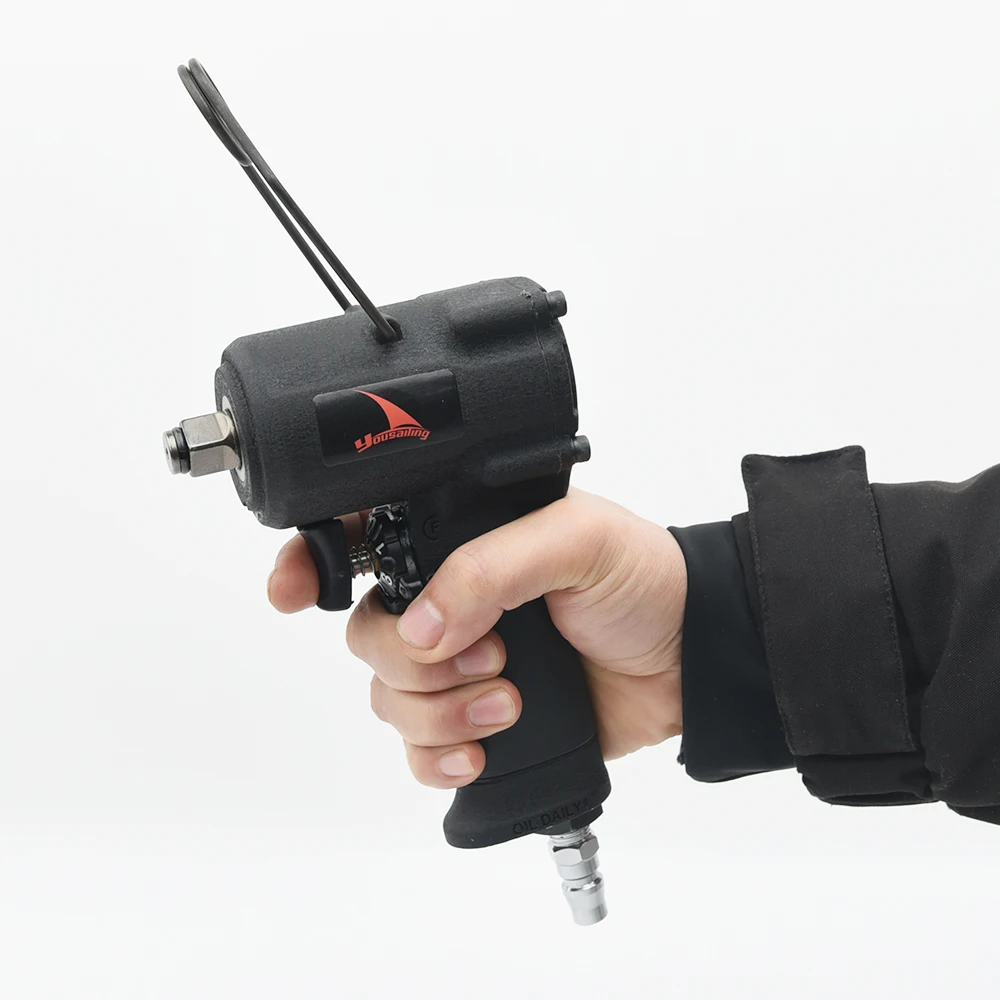 Advantages of Using Pneumatic Wrenches
Advantages of Using Pneumatic Wrenches
Pneumatic impact wrenches offer several benefits that make them an indispensable tool for various applications. Their efficiency and ability to endure demanding tasks set them apart from other wrench types. Let’s delve into the two primary advantages of these tools.
Efficiency and High Torque Power
- Quick Operation: Pneumatic wrenches deliver fast tightening and loosening of fasteners, saving valuable time.
- High Torque Output: They provide powerful torque, tackling stubborn bolts and nuts with ease.
- Minimal Effort: Users don’t need much physical force, reducing fatigue during extended projects.
- Adjustable Settings: Torque levels can be adjusted, offering precision for specific tasks.
This combination of speed, power, and control boosts productivity in mechanical workflows.
Durability and Longevity in Industrial Applications
- Robust Build: Pneumatic wrenches are made from durable materials to withstand heavy use.
- Consistent Performance: They maintain efficiency over time even in harsh working environments.
- Low Wear and Tear: The reliance on compressed air reduces internal damage compared to electric models.
- Reliable for Long Work Hours: Durable construction ensures they can handle prolonged operations without performance issues.
Their long-lasting nature makes them ideal for industrial tasks where reliability is essential.
These advantages highlight why pneumatic impact wrenches are trusted tools for professionals and hobbyists alike.
Common Applications for Pneumatic Wrenches
Pneumatic impact wrenches excel in various fields due to their power and efficiency. They simplify challenging tasks across industries. Below, we explore two primary applications of these versatile tools.
Automotive Repair and Maintenance
Pneumatic impact wrenches are essential in automotive work. They help mechanics save time and effort.
- Wheel Changes: These tools make loosening and tightening lug nuts quick and easy.
- Engine Repairs: They simplify the removal of stubborn bolts in engine components.
- Suspension Work: High torque power allows for efficient suspension adjustments.
- Exhaust System Repairs: They handle tough bolts on exhaust components with ease.
Using a pneumatic impact wrench ensures quicker and smoother vehicle repair processes.
Heavy Equipment Assembly and Disassembly
In industrial settings, pneumatic impact wrenches play a crucial role.
- Construction Machinery: These tools are effective in assembling or disassembling construction equipment components.
- Agricultural Tools: Farmers use them for maintaining heavy farming machinery like tractors.
- Mining Equipment: They handle the robust bolts of mining machines without damage.
- Industrial Assemblies: Factories use them to assemble large mechanical systems requiring high torque.
Pneumatic impact wrenches ensure reliability and efficiency for demanding industrial tasks.
Maintenance and Care
Proper maintenance of your pneumatic impact wrench ensures optimal performance and longevity. Regular care minimizes wear and tear, saving you from costly repairs or replacements.
Cleaning and Lubrication Tips
Cleaning and lubrication are essential for keeping your tool in good condition. Here are key tips:
- Clean After Use: Wipe the wrench clean to remove dust, debris, and grease.
- Inspect the Air Filter: Check and clean the air inlet filter to ensure smooth airflow.
- Apply Lubrication: Use pneumatic tool oil to lubricate internal parts through the air inlet.
- Grease the Hammer Mechanism: Periodically grease the hammer assembly for smooth operation.
- Store Properly: Keep the tool in a dry place to avoid rust or corrosion.
Regular cleaning and lubrication protect against damage and ensure consistent performance.
Troubleshooting Common Problems
Even with proper maintenance, issues may arise. Here’s how to address common problems:
- Reduced Power: Check for air leaks or insufficient air pressure. Tighten connections and ensure proper compressor settings.
- Tool Jamming: Clear any debris from the hammer mechanism and lubricate it properly.
- Air Leaks: Inspect seals and gaskets. Replace damaged components immediately.
- Overheating: Avoid running the tool without breaks. Use proper lubrication to reduce friction.
- Trigger Issues: Clean or replace the trigger if it feels stuck or unresponsive.
Addressing these issues promptly keeps your pneumatic impact wrench reliable and efficient. Regular maintenance ensures your tool is always ready for demanding tasks.
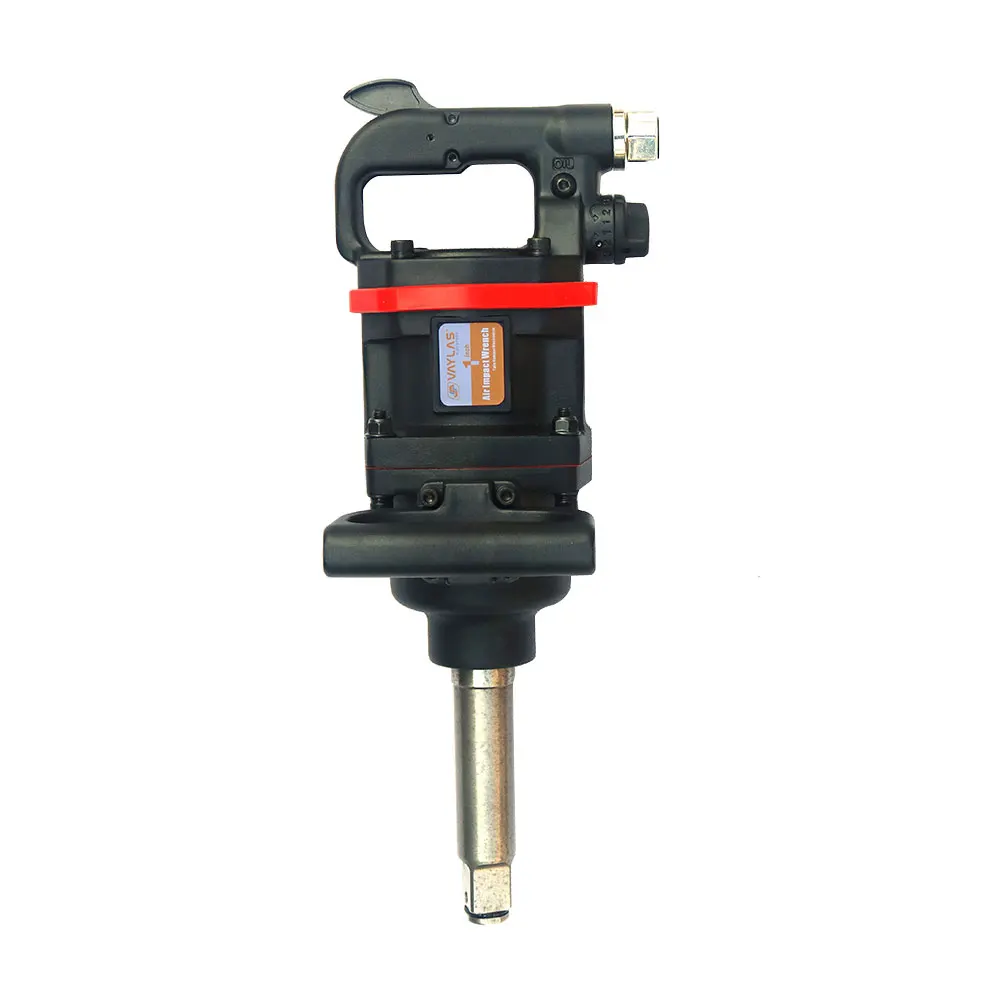 Common Uses
Common Uses
The pneumatic impact wrench serves many roles across industries. In auto repair shops, it’s essential for tire changes. Technicians remove and install lug nuts in seconds. This speeds up rotations and service appointments. It also handles suspension bolts, brake calipers, and exhaust systems.
Truck and fleet maintenance relies heavily on this tool. Large wheels require high torque to loosen. Manual wrenches take too long. The pneumatic impact wrench completes the job efficiently. It also works on trailer hitches and fifth wheels.
Construction crews use it for assembling steel structures. Bolts on beams and frames are often pre-torqued. Removing or adjusting them demands strong tools. The impact wrench delivers consistent force without stripping threads.
Manufacturing plants integrate it into assembly lines. Workers tighten critical joints on machinery, vehicles, or appliances. Consistent torque ensures safety and compliance. Automated setups sometimes mount impact wrenches on robotic arms.
Farmers and equipment operators benefit too. Tractors, harvesters, and plows have large fasteners exposed to dirt and weather. Rust and corrosion make removal difficult. The pneumatic impact wrench breaks them free with minimal effort.
DIY garage owners use it for weekend projects. Swapping wheels, building trailers, or restoring classic cars becomes easier. Even home mechanics appreciate the time saved.
Emergency responders carry compact versions. Firefighters and rescue teams remove vehicle parts during extrication. Speed is critical in life-saving situations. The tool helps cut through metal quickly.
Industrial maintenance teams use it for machine servicing. Downtime costs money. Fast disassembly and reassembly keep operations running. Bearings, gears, and couplings come apart smoothly.
With such wide applications, the pneumatic impact wrench proves its value in nearly every mechanical field.
Choosing the Right Pneumatic Wrench
Finding the right pneumatic impact wrench is crucial for efficiency and effectiveness. Consider key factors before making your decision.
Factors to Consider (Size, Torque, Compatibility)
- Size: Choose a size that fits your workspace and task requirements. Compact models work well in tight spaces, while heavy-duty wrenches suit industrial tasks.
- Torque: Ensure the wrench’s torque matches your needs. Higher torque is essential for removing stubborn bolts. Adjustable torque settings add flexibility.
- Compatibility: Make sure the wrench is compatible with your air compressor. Check airflow requirements and fittings.
- Weight and Ergonomics: Lightweight tools reduce fatigue during long projects. Ergonomic designs offer comfortable handling.
- Application Type: Select a model designed for your specific tasks, such as automotive repair or industrial assembly.
Weighing these factors ensures you find the best tool for your needs.
Popular Brands and Models in the Market
Some brands lead the market with reliable pneumatic impact wrenches. Here are a few examples:
- Ingersoll Rand: Known for durability and power, their models suit professional applications.
- Chicago Pneumatic: Offers a range of versatile, high-performance wrenches for various tasks.
- DeWalt: Focuses on ergonomic designs and adjustable torque settings for ease of use.
- Snap-on: Delivers high-quality wrenches ideal for automotive and heavy-duty applications.
- Aircat: Prioritizes noise reduction, making it a great choice for quieter work environments.
Research these brands and models to align features with your requirements. A trusted brand ensures long-term reliability and performance.
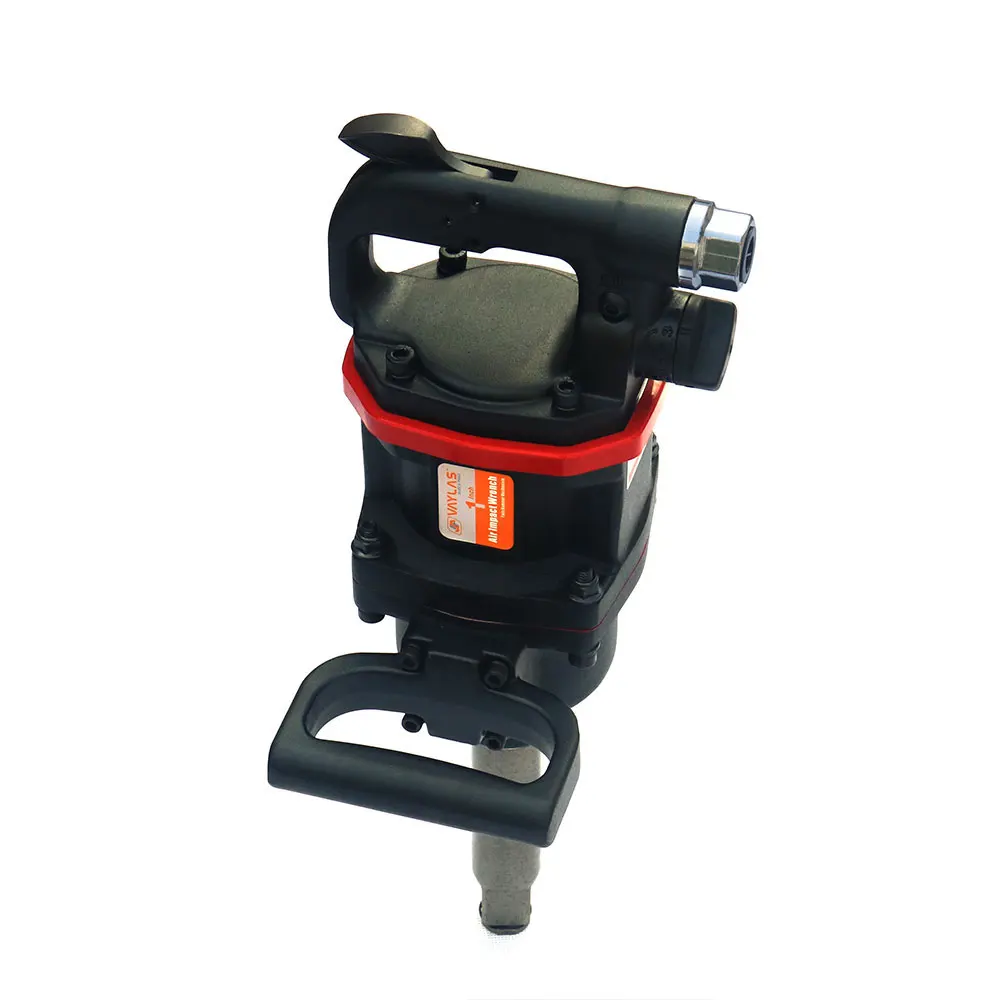 Frequently Asked Questions (FAQ)
Frequently Asked Questions (FAQ)
Q: Can I use a cordless compressor with a pneumatic impact wrench?
No, cordless compressors lack the airflow needed. They work with low-demand tools only.
Q: Do I need special sockets for a pneumatic impact wrench?
Yes, always use impact-rated sockets. Regular sockets can crack or explode.
Q: How often should I oil my pneumatic impact wrench?
Add 2–3 drops of air tool oil into the air inlet before each use.
Q: Can I use an extension cord with the air hose?
Avoid long extensions. They reduce pressure. If needed, use a shorter, wider hose.
Q: Is a pneumatic impact wrench safe for beginners?
Yes, if used properly. Wear safety glasses and secure loose clothing.
Q: What PSI should I run my impact wrench at?
Most require 90 PSI. Check your tool’s manual for exact settings.
Q: Can I leave the tool connected to the compressor all the time?
It’s okay, but drain moisture from the line first. Turn off the compressor when not in use.
 Final Thoughts
Final Thoughts
The pneumatic impact wrench remains a cornerstone of professional and personal repair work. Its unmatched power, durability, and efficiency make it a top choice for anyone dealing with stubborn fasteners. From changing tires to maintaining heavy machinery, this tool saves time and effort while delivering consistent results.
Modern advancements have improved ergonomics and noise control. Yet the core design stays true to its industrial roots. When paired with a compatible air compressor and proper maintenance, a pneumatic impact wrench can last decades. Its role in workshops, garages, and job sites continues to grow.
Whether you’re a seasoned mechanic or a weekend warrior, investing in a quality pneumatic impact wrench pays off. It simplifies tough jobs and boosts productivity. So when you face a pile of rusted bolts or prepare for a big project, reach for the trusted power of a pneumatic impact wrench.
